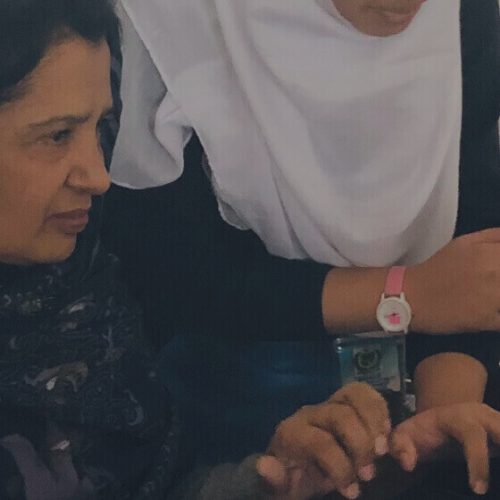
Ed-tech drives quality and accountability in Islamabad public school networks
In Pakistan, the public education system is plagued with a myriad of problems. On average, the government spends 12,000 rupees to educate one student per month in the public sector. In comparison, low-cost private schools offering similar or slightly better student learning outcomes do so for a fraction of this cost, often around 2,000 rupees per month. Furthermore, public school teachers are often far better educated that their private school counterparts, with a master’s degree and a primary teaching certification. Also, public school teachers are often provided with some pedagogic training during their tenure as teachers. Lastly, public school teachers are also compensated 4 to 5 times more than their colleagues teaching in private schools.
Why then are more and more parents choosing to enroll their children in private schools, rather than public schools where education is free of cost? One of the reasons is the low quality of teaching that is often due to a lack of accountability and governance in the public-school sector. Teacher absenteeism, little to no incentive to perform better due to job security and no teacher evaluation due to a lack of data have been identified as some of the main causes of the poor education standards in these schools.
Therefore, to address the problem of accountability and governance, public school systems are looking for innovative solutions to help combat this problem. Knowledge Platform’s “smart classroom” solution helps decision makers by providing data-driven insights and easy-to-understand dashboards to pin-point struggling schools in such networks. These decision makers are provided with a macro view of how the entire system is progressing, as well as an option to drill down to the progress of a student if needed. From the senior-most person at the department of education, to regional / area officers, school principals, teachers and right down to the student, each stakeholder is provided with a tailored dashboard to help them with monitoring and evaluation of themselves or their constituents.
This was the problem that Ms. Saadia Adnan inherited when she was elevated to the post of director training at the Federal Directorate of Education. Over the past year, Saadia and the FDE, which is the apex body for education in Pakistan has been piloting “Learn Smart Classroom” in 75 of their public schools in and around the nation’s capital, Islamabad. This is how they have been able to digitise their governance process: The head of the program, Ms. Adnan, can see how each district in their constituency is performing, benchmarked to one another, and if their ranking has gone up, down, or stayed stagnant. Then District Education Officer (DEO), the key person in charge for each district, can view how each school in his or her district is performing. By providing a blended metric for “achievement”, which is a cumulation of “accuracy” (how well a student in a school are performing in each skill) and “completion” (how many skills a school has taught to its class till date), DEOs are able to gain a more comprehensive understanding of each school’s progress.
Next, the principal of each public school can monitor how their teachers are progressing with the curriculum, and if the blended learning solution is being utilised as per the mandate of the FDE. Here, principals can also monitor teacher and student attendance for each blended learning session, and if a class is ahead, behind or on par with its curriculum pace. If a teacher is ahead, but class “accuracy” is low, or a teacher is falling behind, the principal will be able to quickly identify this and take the appropriate action.
Gulmeena, once a shy student on the periphery, is now front and centre in her advocacy for girls to pursue quality education. “Once I heard that LSP had launched new lessons for younger grades, I immediately got my younger cousins to enroll into the program.” Gulmeena says “Not only has LSP given me the opportunity to prove my ability to myself and disprove naysayers, it has also given me the confidence to get up on to any forum and speak about my personal experiences that have got me where I am today.”
Lastly, each teacher can see how well their students are performing in each of their classes. Through interactive dashboards and leaderboards, a teacher can get rapid feedback and analytics of the skill or concept that they have just taught the class. As a result of this rapid feedback, a teacher can easily identify what skills or concepts that class is struggling with, and if there are any students that would need remedial learning.
